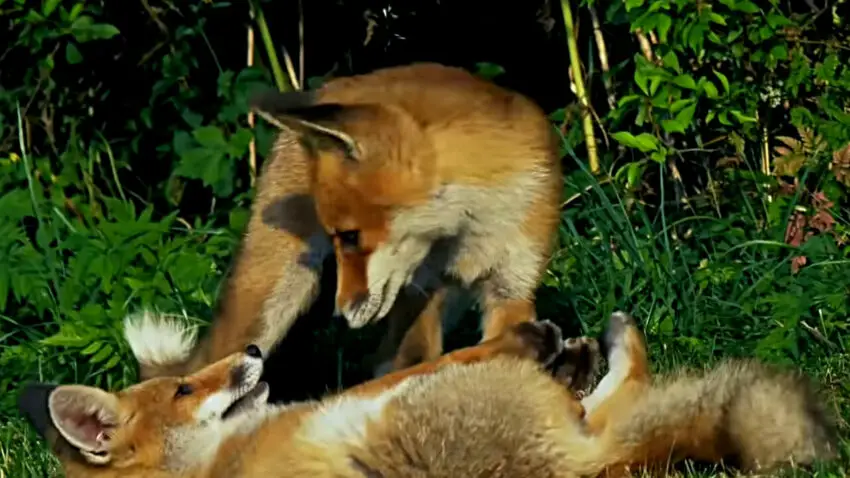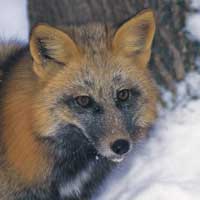Red Fox Facts
Table of Contents
Red foxes are native in North America and can be found throughout the United States and Canada except in the far north, where the arctic fox (scientific name Alopex lagopus) is better adapted to live and in some parts of western United States. Foxes from Europe were also introduced repeatedly in various parts of the continent for fur farming and fox hunting. Releases occurred in Alaska, California, in the southeastern, eastern, and central states.

Historically, native red foxes occupied the northern regions of North America and mountain areas at high elevations in the western USA. Introductions of European red foxes occurred in the eastern USA and in lowland areas on the Pacific coast. At the beginning of the 20th century, red foxes expanded into central and eastern states where they had not been recorded historically, leading researchers to conclude that these were non-native red foxes, introduced from Europe. Some authors also argued that non-native red foxes occur at higher population densities and are better adapted to live in human-disturbed environments, such as urban areas, than native American red foxes.
However, recent genetic studies, as yet unpublished, have suggested that this post-European expansion of red foxes in the United States was due to the spread of native foxes southward from Canada, following the clearing of forests for agriculture, changes in the predator community, and other major habitat changes in the region. It seems that the introduced European foxes made at best only a minor contribution to the fox population seen in mainland North America today.
Appearance

Red foxes from North America are comparatively light with larger sexual dimorphism than Eurasian red foxes. This has led some authors to consider this red fox to be a different species or sub-species (scientific name Vulpes fulva) from the Eurasian red fox (scientific name Vulpes vulpes). In North America, black foxes are relatively common. Black foxes are known as silver foxes as the hair on the rump is tipped with silver and this is very conspicuous against the black fur. A variant that is only present in North America is the cross fox. Cross foxes have a prominent black stripe along the spine and a stripe along the shoulders at a right angle, which gives the appearance of being a cross.
Prey

Other bird populations reduced by fox predation in the Great Basin region in the USA are pheasants (scientific name Phasianus colchicus) and sage grouse (Centrocercus urophasianus).
Urban life
A study in suburban Toronto, Canada, found that foxes lived in groups that contained both breeding and non-breeding females. Fox territories included golf courses and parkland as well as low-density housing. However, in contrast to mainland Europe and Great Britain, foxes avoided medium-density housing areas, suggesting that they might not have been used to urban life.
Websites of interest
There are a lot of useful external websites on foxes. The ones listed here have general and more specific information and images about foxes in the USA and Canada:
- Alaskan Department of Fish and Game
- Extension – information on wildlife based on research
- Grist – about the Sierra Nevada red fox
- Hinterland’s Who’s Who – information about wildlife in Canada
- Humane Society of the United States
- North American wildlife website
- The Biogeography of the red fox (student project website)
References
- Adkins, C. & Stott, P. (1988). Home ranges, movements, and habitat associations of red foxes (Vulpes vulpes) in suburban Mississauga, Ontario, Canada. Journal of Zoology 244, 335-346.
- Kamler, J.F & Ballard, W.B (2002) A review of native and nonnative red foxes in North America. Wildlife Society Bulletin 30, 370-379.
- Lewis, J.C., Sallee, K.L. & Golightly, R.T. (1999) Introduction and range expansion of nonnative red foxes (Vulpes vulpes) in California. American Midland Naturalist 142, 372-381.
- Sargeant, A.B., Allen, S.H. & Eberhardt, R.T. (1984) Red fox predation on breeding ducks in midcontinent North America. Wildlife Monographs 89, 1-41.,
- Swanson, B.J., Furhmann, R.T. & Crabtree, R.L. (2005) Elevational isolation of red fox populations in the Greater Yellowstone Ecosystem. Conservation Genetics 6, 123-131.
